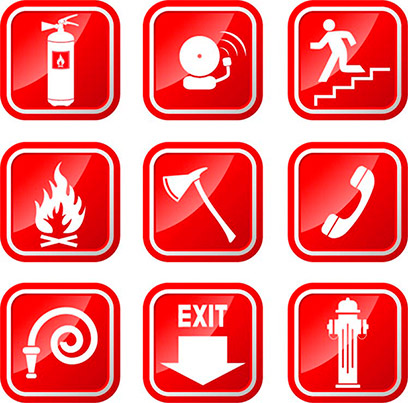Know and apply the necessary security measures to act in a panic situation.
The concept of security in public places such as restaurants or bars has changed significantly as a result of the tragic events that occurred in recent years, (such as the News Divine nightclub or the fire at the Casino Royale in Monterrey), this has forced the authorities to to supervise with greater rigor the evacuation procedures, emergency exits, existence of internal civil protection manuals and correct signaling, to prevent these events from being repeated.
The duty of restaurants should not be limited to offering the best service, but to have trained personnel to act in an emergency situation and continuously monitor the general conditions of the property.
As part of the regulations of the Civil Protection Law, restaurants must have the authorization that guarantees the safety conditions for their operation and operation, its validity is three years and the fine for non-compliance is 150 to 300 days of salary minimum and closure. For those establishments that have access to more than 50 people between employees and customers, it is essential to have an internal Civil Protection program and civil liability insurance. In the case of restaurants that have a capacity of less than 50 people, the place must have:
- Fire extinguishers with current charge, one for every 50 square meters
- Conduct a quarterly drill
- Place in a visible place the telephones of the public security authorities, civil protection and firefighters and d) Place in a visible place, signs of actions to be followed in relation to earthquakes and fires and must be permanent.
Another important point in restaurant safety is the high risk of fire in kitchens and warehouses. Among the main causes of fire are: the accumulation of rags, papers or garbage near stoves and ovens, electrical installations in poor condition, incorrectly connected electronic devices or improper storage of flammable or combustible materials. For this, it is ideal to have an anti-fire system that provides total security and protection to these specific areas. Some systems have early carbon monoxide control, because a gas leak can be a major threat. These detection systems also have the possibility of monitoring the critical levels of water and temperature, keeping the business safe from water leaks or avoiding losses of stored food due to increases or decreases in temperature.
The eviction of people from a place in an emergency situation is part of the internal security program of Civil Protection and is called evacuation. In an alarm situation, evacuation must be carried out horizontally, through doors and corridors and vertically, through stairs.

The most important security measures to be taken into account are:
- All areas must be clearly marked and visible: clear and simple instructions will facilitate the understanding of the message.
- Any door leading to an escape route must be properly marked.
- The emergency routes must be short routes and without obstacles of any kind. Avoid anything that can cause tripping, such as uneven floors or small steps behind doors.
- The doors must open in the direction of travel and will have pressure bars instead of latches or handles. There should be no possibility of leaving them locked. If there are revolving doors or turnstiles, have emergency exit doors next to them.
- The final emergency doors must open in a safe place, they must not lead to open spaces or without exit (closed gates, underground parking lots, interior patios without any exit).
- Fire doors in corridors and common areas that must always remain closed or have an automatic closing mechanism in the event of an alarm.
- The route must be clearly marked with international symbols in green, especially at points where there is a change of direction. Emergency doors must be distinguished from others without the possibility of error.
- Low above the ground or on the wall there should be a luminous or fluorescent sign indicating the exit route. Very often evacuations occur in the dark or in poor visibility due to smoke.
- Firefighters must have easy access: reserved emergency steps, access to stairs.
- There should be no blind zones, no exit.
- Sufficient number of fire extinguishers, located in easily accessible places.
- Doors located on workplace evacuation routes must be capable of being opened from the inside at any time without special assistance.
- Emergency doors should not be closed so that anyone who needs to use them in an emergency can easily and immediately open them. The emergency doors will be located inside the room, in areas far from ordinary doors, avoiding that both types
- of doors coincide in the same entrance hallways to the premises.
- Swing doors and gates must be transparent to allow visibility of the area accessed.

